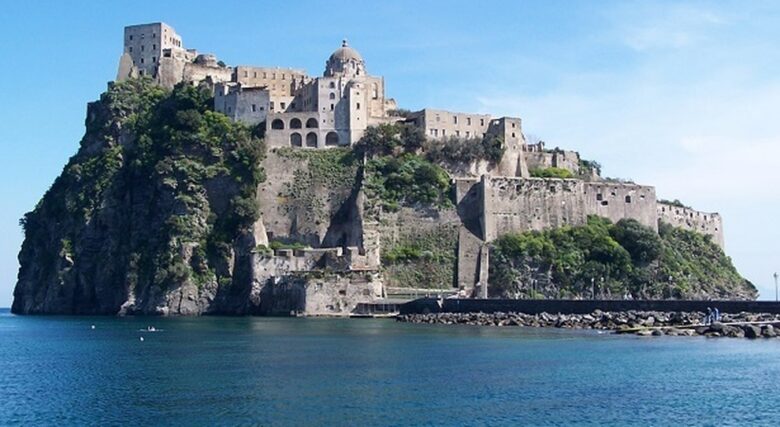The Cuma Archaeological Park is a hidden gem of Campania—a fascinating journey into the past of one of the earliest Greek colonies in the West, dating back to 740 BC. This archaeological site offers breathtaking views and a remarkable glimpse into the millennia-old history of Cuma and the cultures that shaped the region. In this article, we’ll explore the history of Cuma, highlights of the archaeological park, and all the practical information you need to plan your visit.
The History of Cuma
Cuma is believed to be the first Greek colony in Magna Graecia, founded around 740 BC. Located on the fertile coast of Campania, northwest of Naples and facing the island of Ischia, its strategic position allowed it to flourish as a vital commercial and cultural hub. Over the centuries, Cuma came under the rule of the Greeks, Samnites, and Romans—each civilization leaving its distinctive mark on the city.
One of Cuma’s most iconic and mysterious landmarks is the Cave of the Cumaean Sibyl, where a legendary priestess interpreted the oracles of Apollo and foretold the future to the people of Cuma. According to myth, the Sibyl was granted immortality by Apollo but forgot to ask for eternal youth. As a result, she aged endlessly, until her body withered away, leaving behind only her voice. Visitors would pose questions, and the Sibyl would write responses on leaves that were scattered by Apollo’s winds—making her prophecies cryptic and open to interpretation.
What to See at the Cuma Archaeological Site
The Acropolis
The Acropolis of Cuma, the elevated and fortified part of the ancient settlement, served both as a stronghold and lookout point. From here, visitors can enjoy breathtaking panoramas over the coast and the nearby islands of Ischia and Procida. During World War II, the area was repurposed as a military bunker, with artillery installations overlooking the sea.
The Temple of Jupiter (or Apollo)
At the highest point of the ancient city lie the ruins of what was once believed to be the Temple of Jupiter, though more recent studies suggest it may have been dedicated to Apollo. In this area, archaeologists have discovered a baptistery and early Christian tombs, testifying to Cuma’s importance as a center of Christian worship in the 5th century AD.
The Necropolis
Outside the ancient city, near the median gate, lies the necropolis—Cuma’s ancient cemetery—home to several mausoleums. Excavations have unearthed grave goods and artifacts buried alongside the deceased. This area is not always open to the public, so it is advisable to consult the official website of the Campi Flegrei Archaeological Park for visiting information.
The Forum and the Capitolium
In the lower part of the site, archaeologists have uncovered the remains of the forum, the Capitolium, ancient thermal baths, and a marketplace. These sections are still undergoing excavation and are not continuously accessible to the public, though occasional visits are possible through reservation.
How to Get to the Cuma Archaeological Park
-
By public transportation: From Naples, take the Cumana railway toward Torregaveta and get off at Fusaro. From there, the site is reachable on foot. Alternatively, you can take the Flegrean Archeobus or the Miseno–Pozzuoli–Cuma Scavi Bus.
-
By car: Set your GPS to Via Monte di Cuma, 1 – 80078 Pozzuoli (NA). The destination is well marked and easy to reach by road.
Opening Hours and Tickets
The Cuma Archaeological Site is open daily from 9:00 AM until one hour before sunset, except on Tuesdays, when it is closed.
-
Ticket price: €5
-
Reduced price: €2 for EU citizens aged 18–25
-
Cumulative Campi Flegrei Circuit ticket: €10 (€5 reduced), allowing access to Cuma, the Roman Baths of Baia, the Aragonese Castle with the Campi Flegrei Archaeological Museum, and the Flavian Amphitheater.
A Journey Through Time
The Cuma Archaeological Park offers a rare opportunity to step into the layers of history that shaped the Campania region—from Greek settlers to Roman emperors and early Christian communities. A visit to this captivating site invites you to walk the ancient paths of oracles, warriors, and poets, and discover the timeless spirit of a land that continues to echo with the voices of its past.


